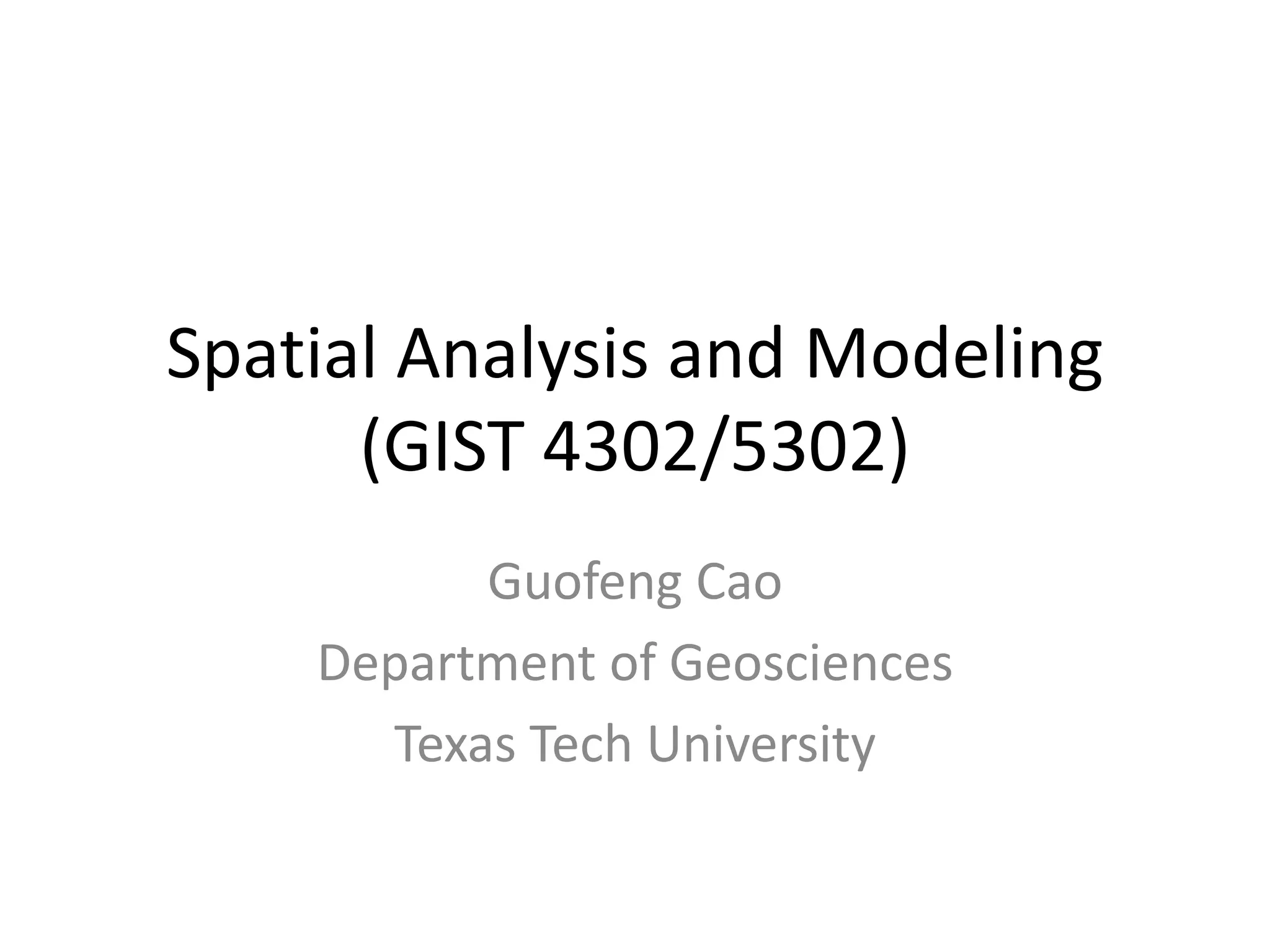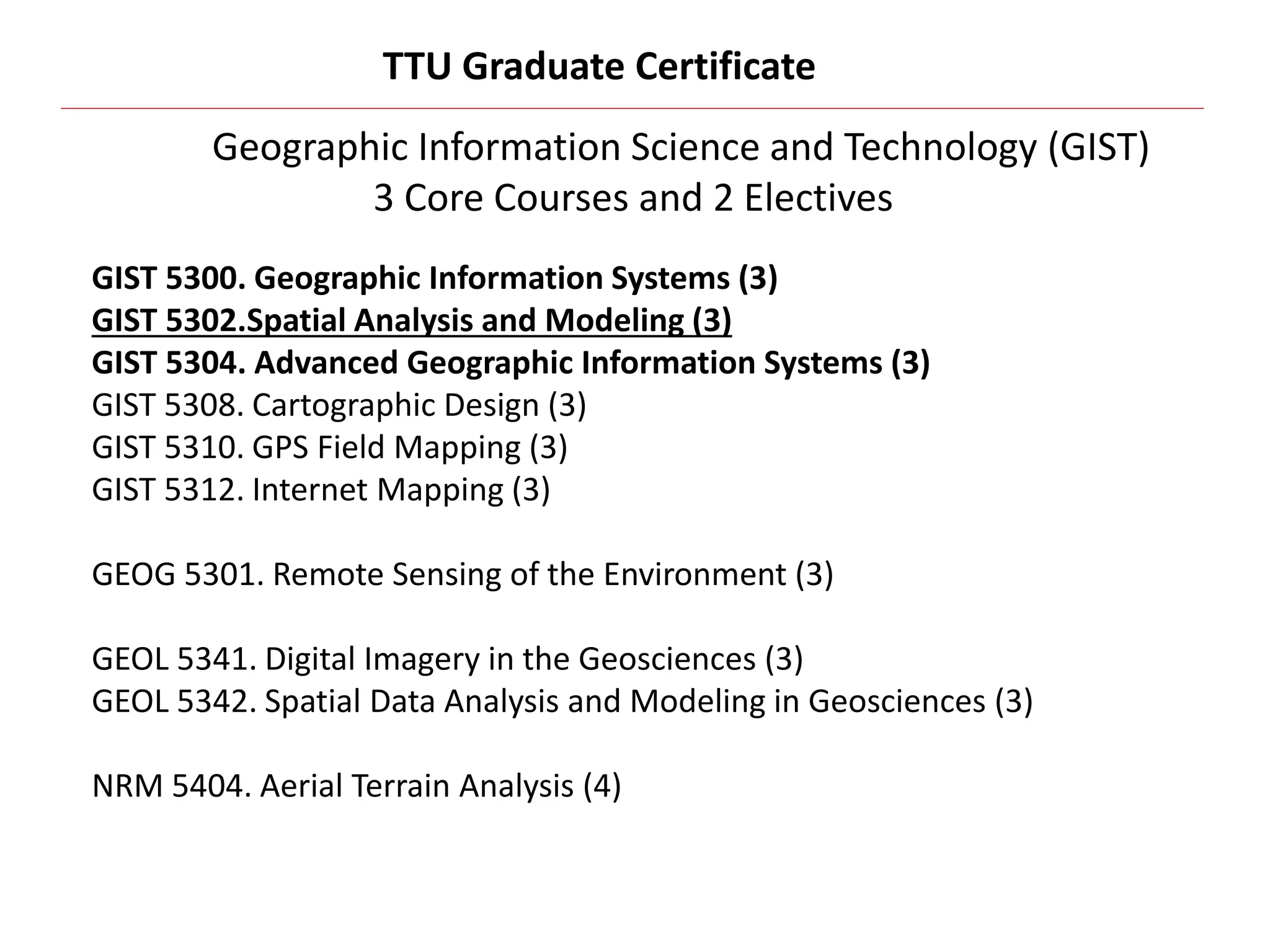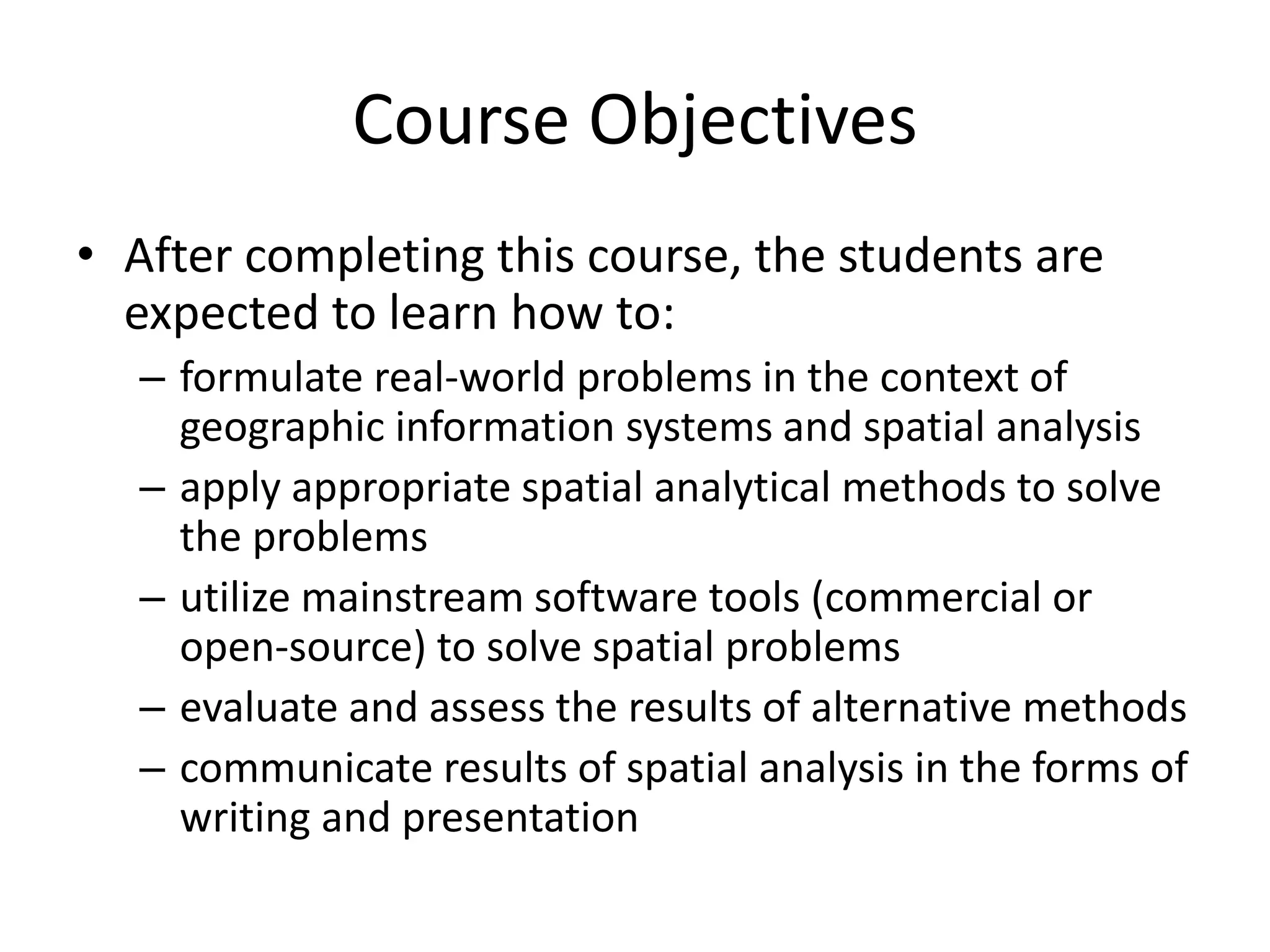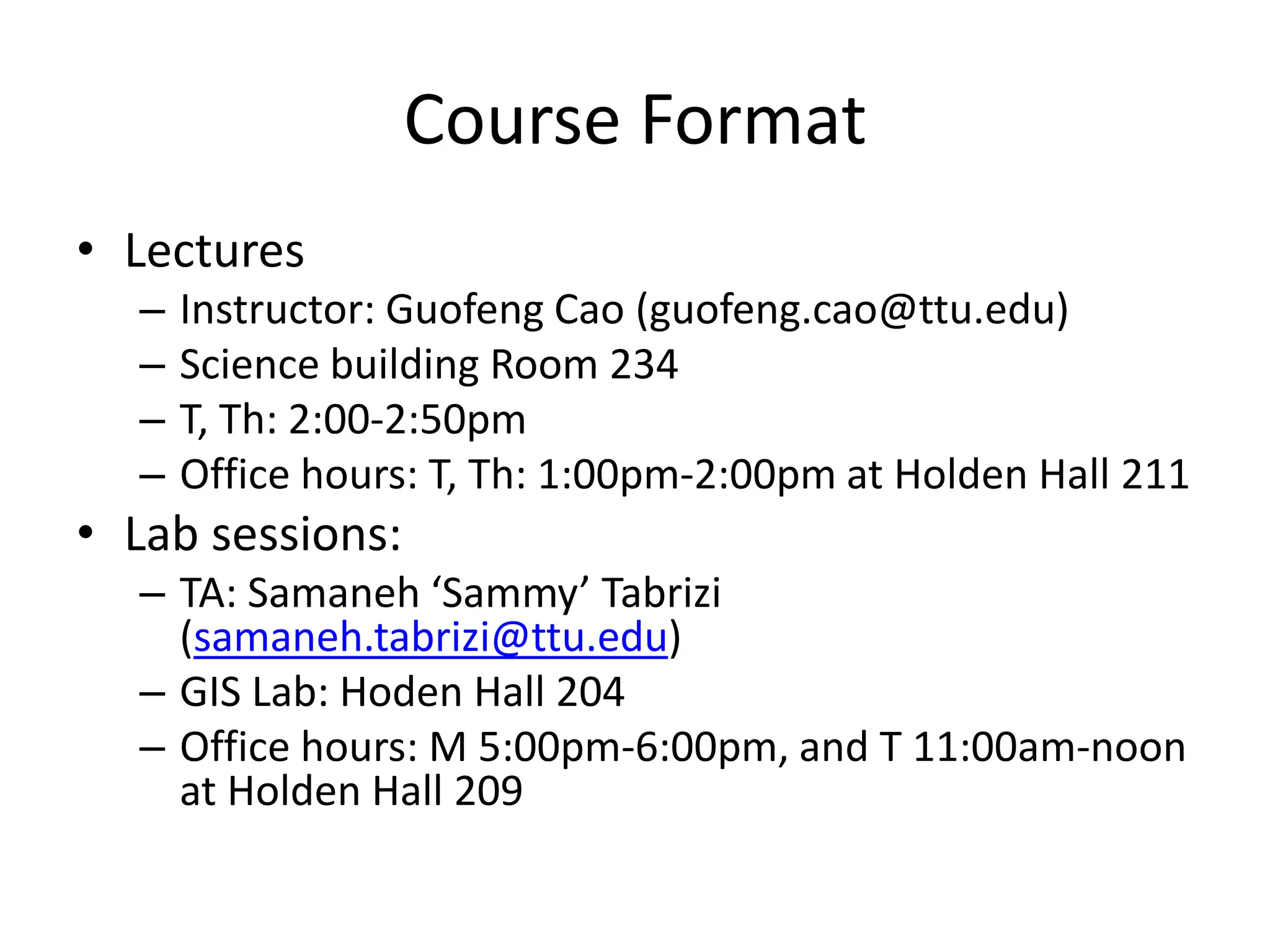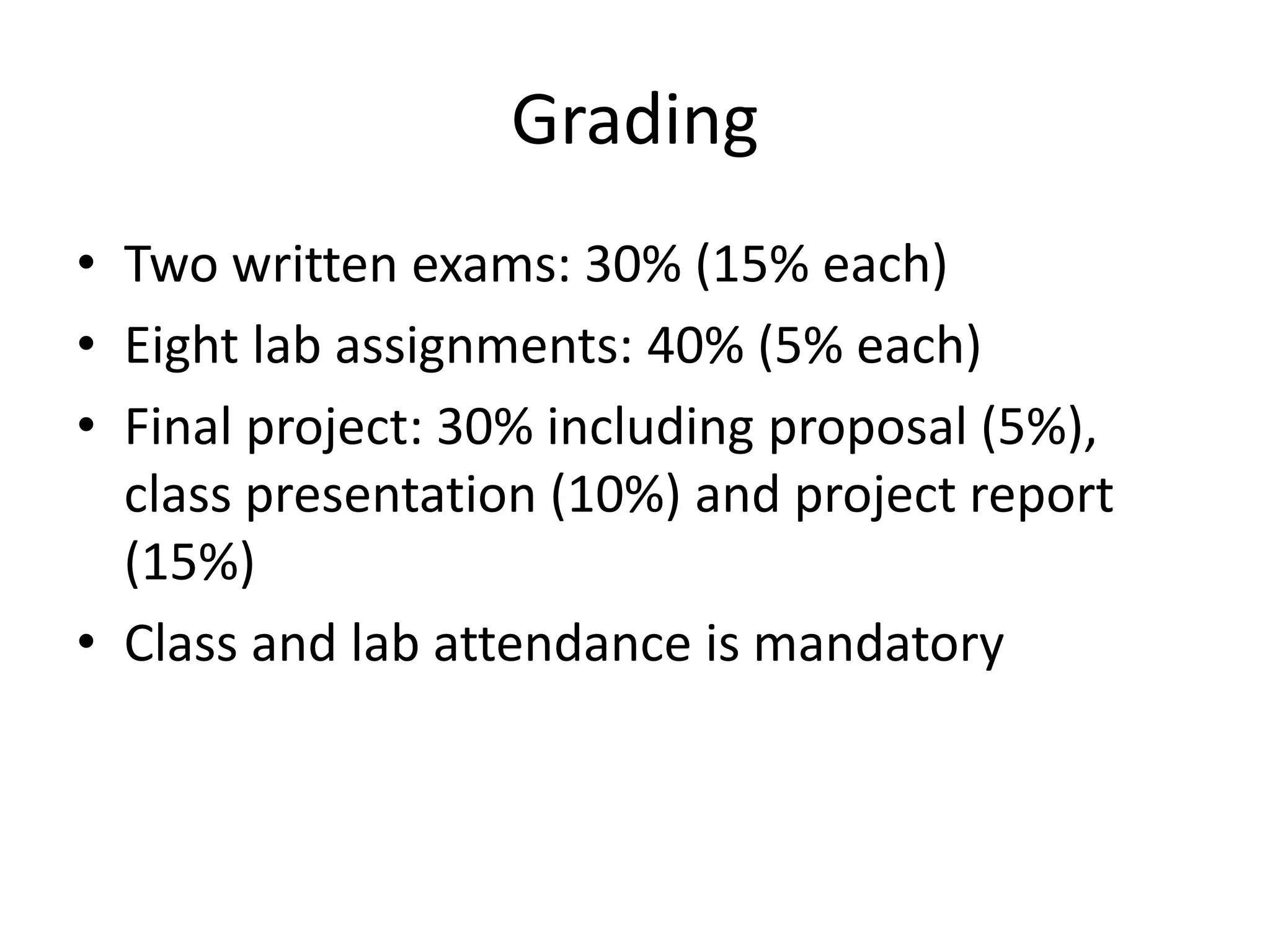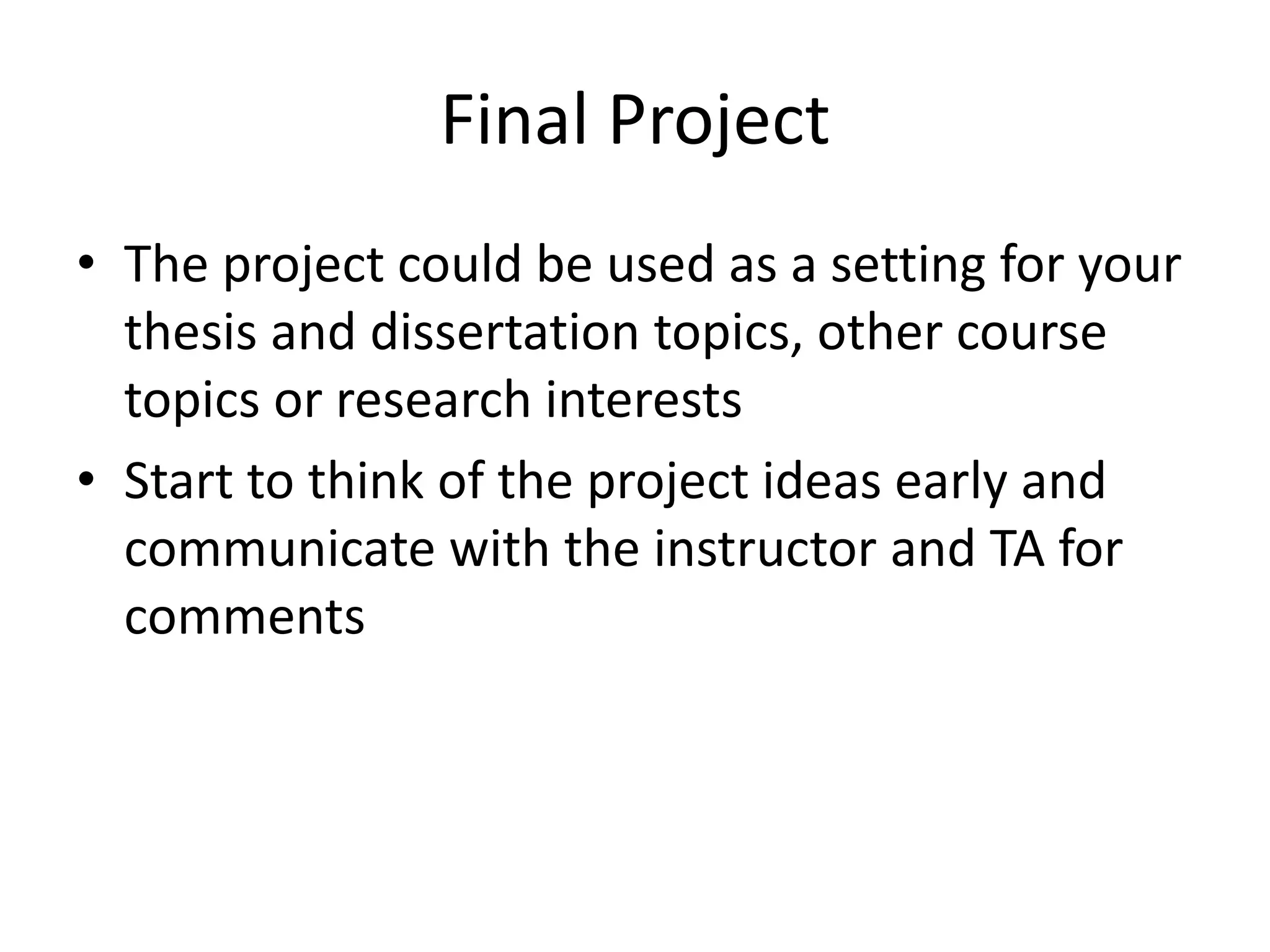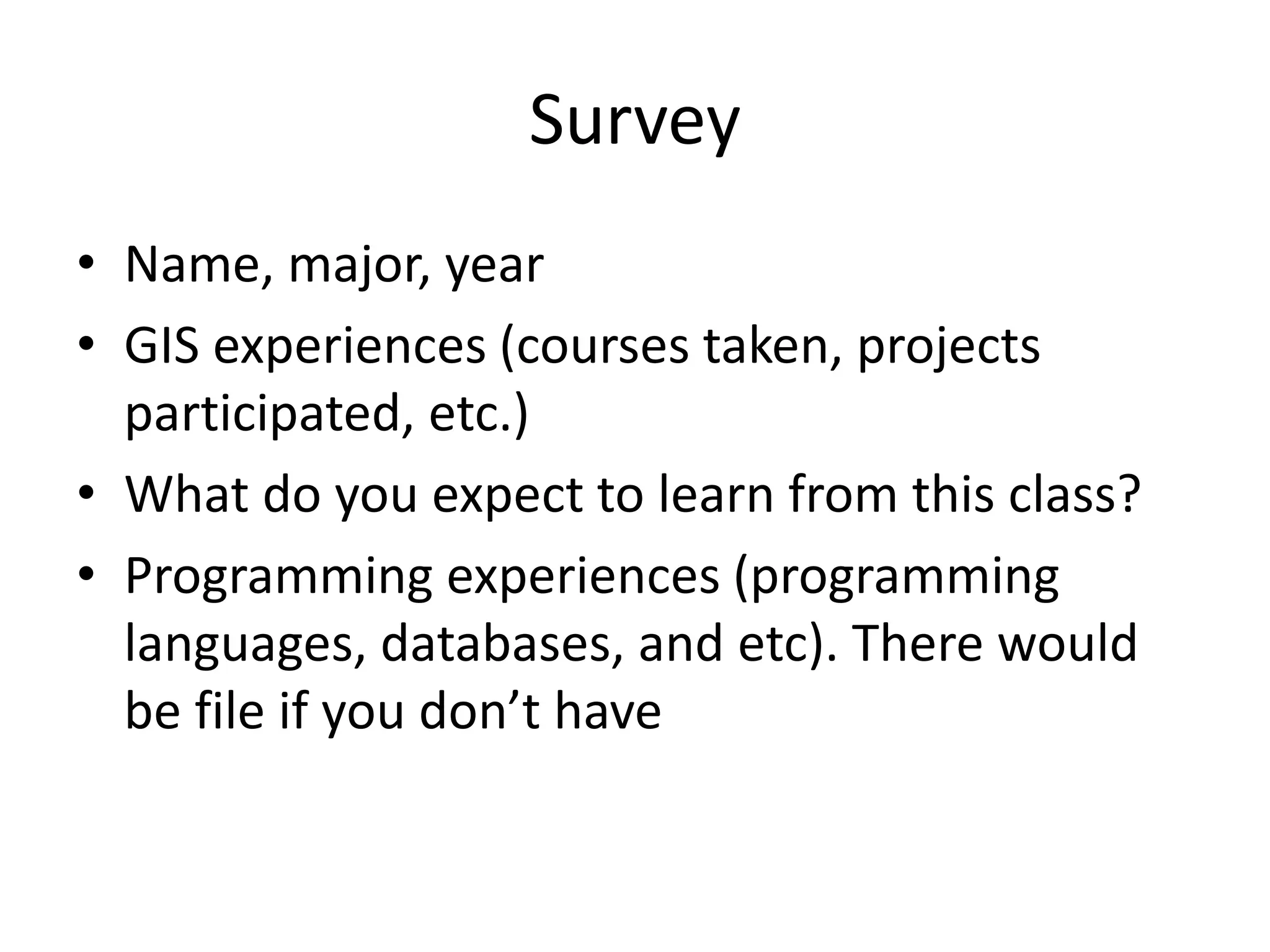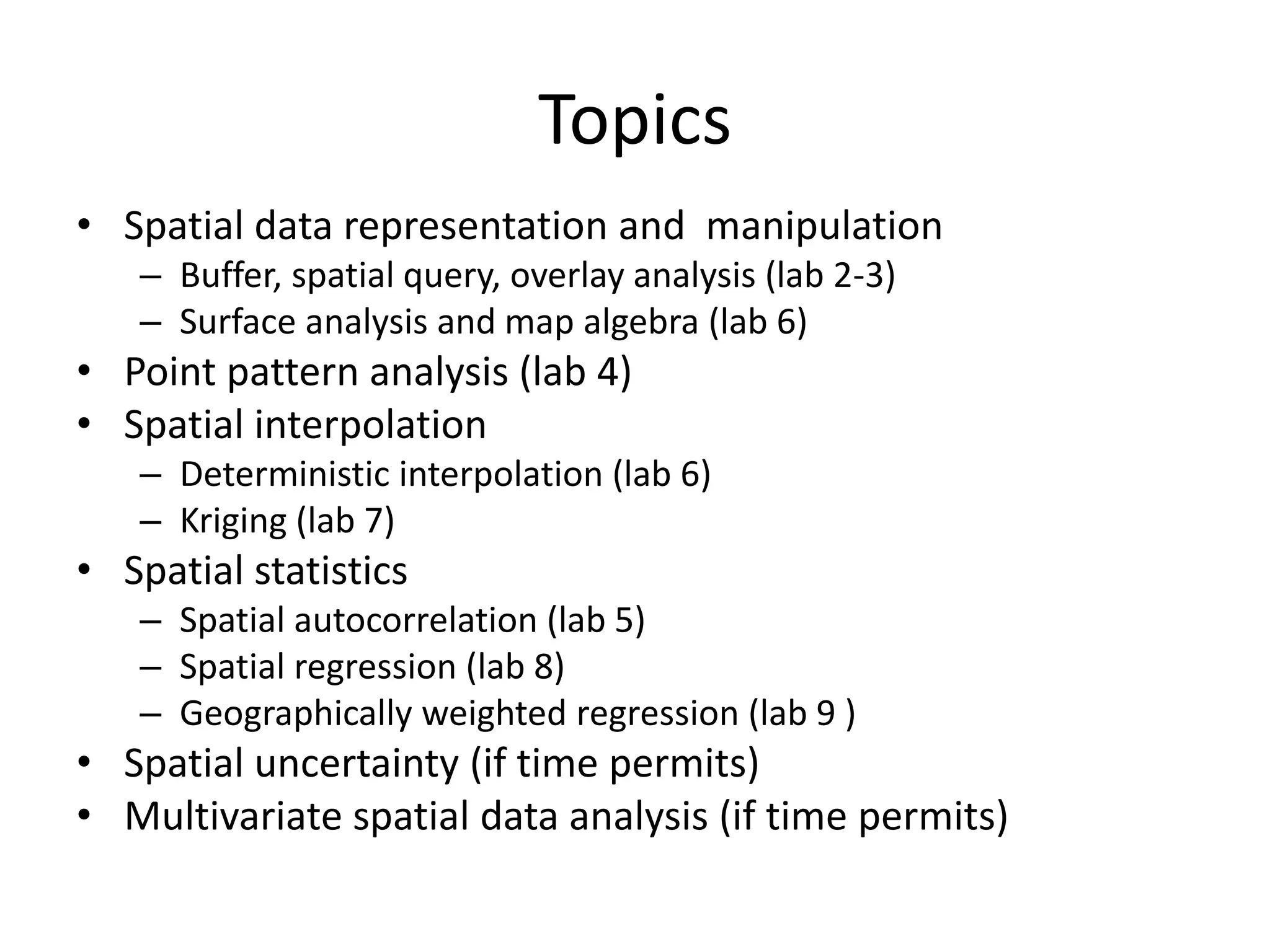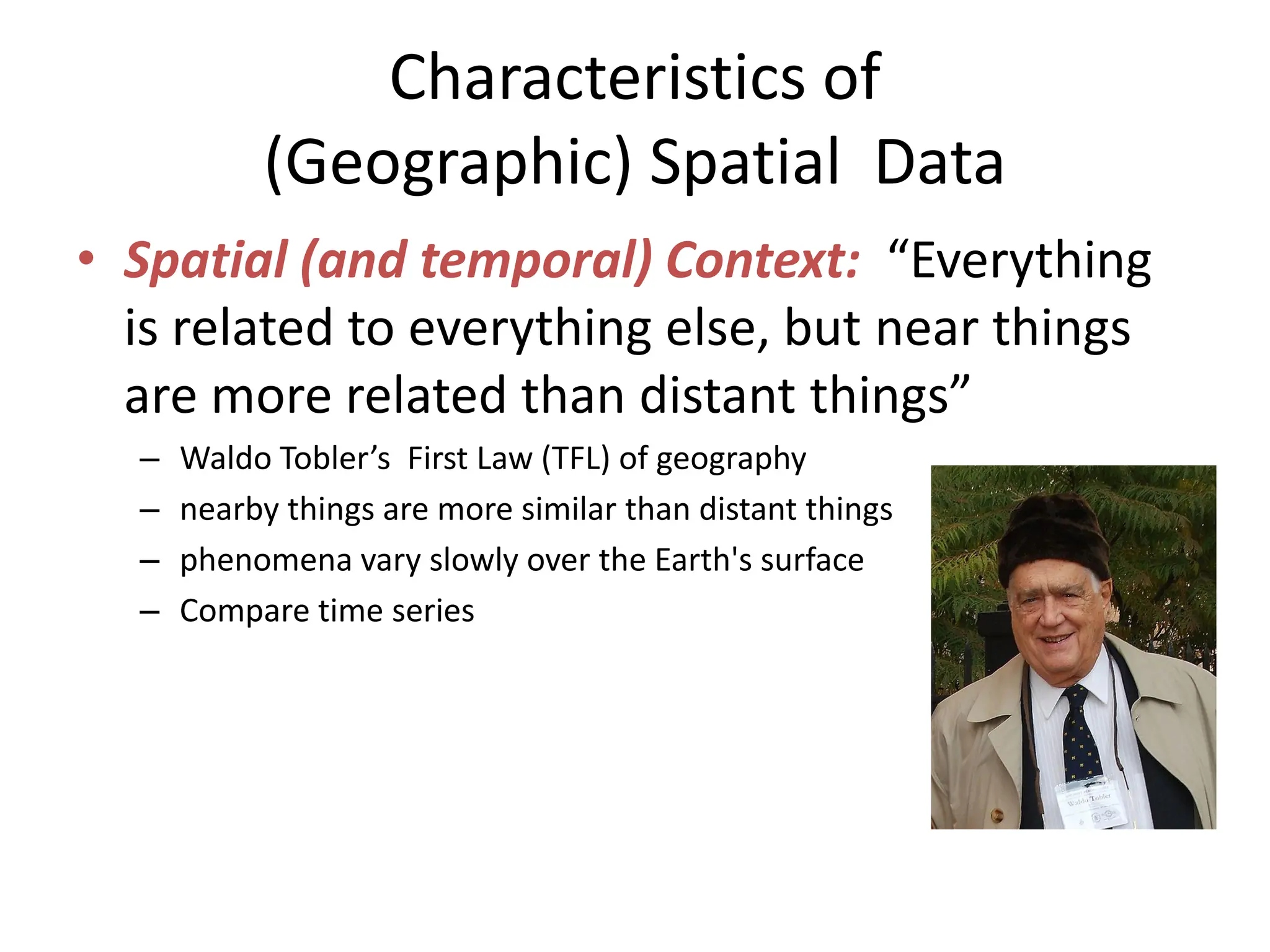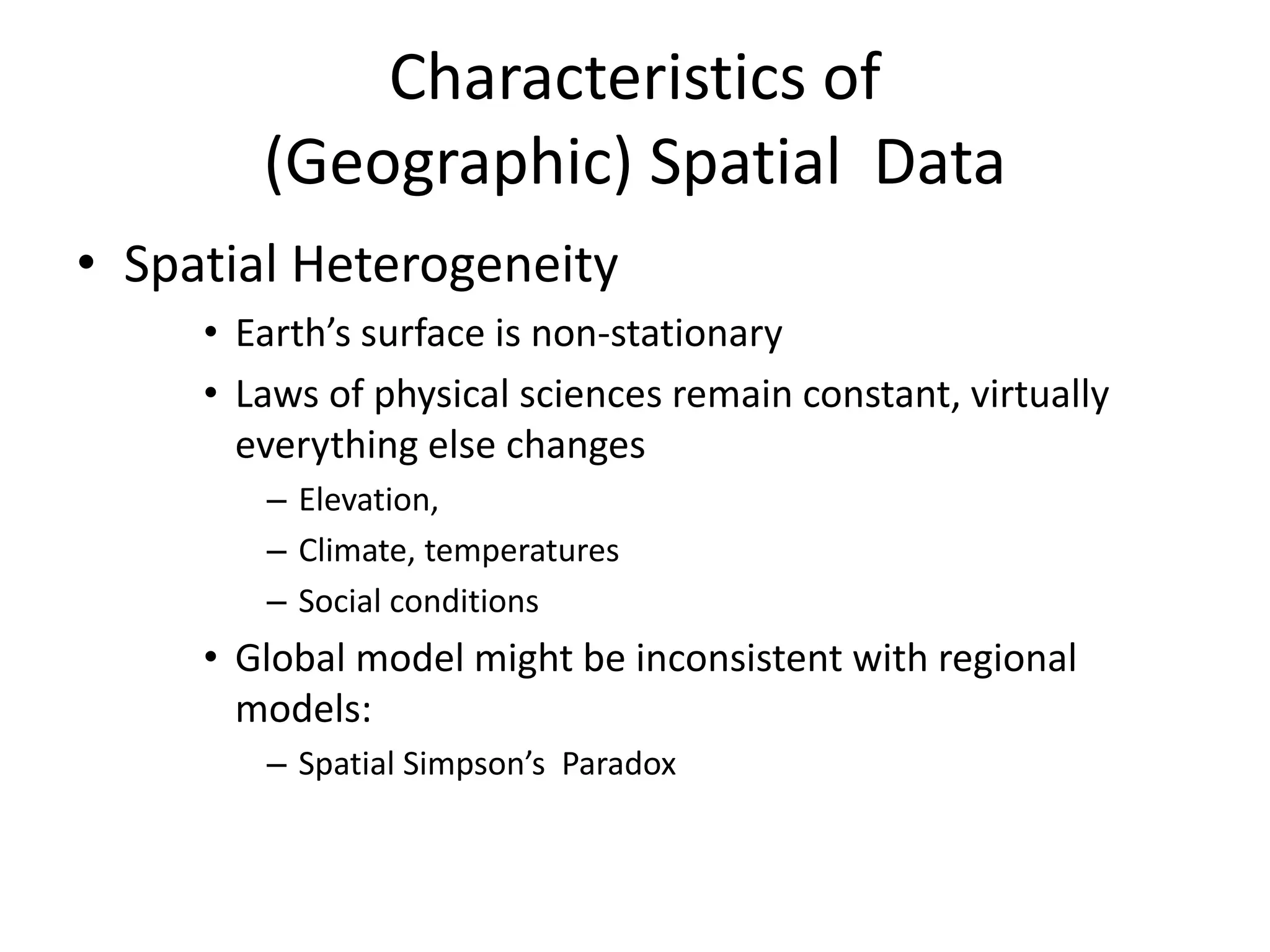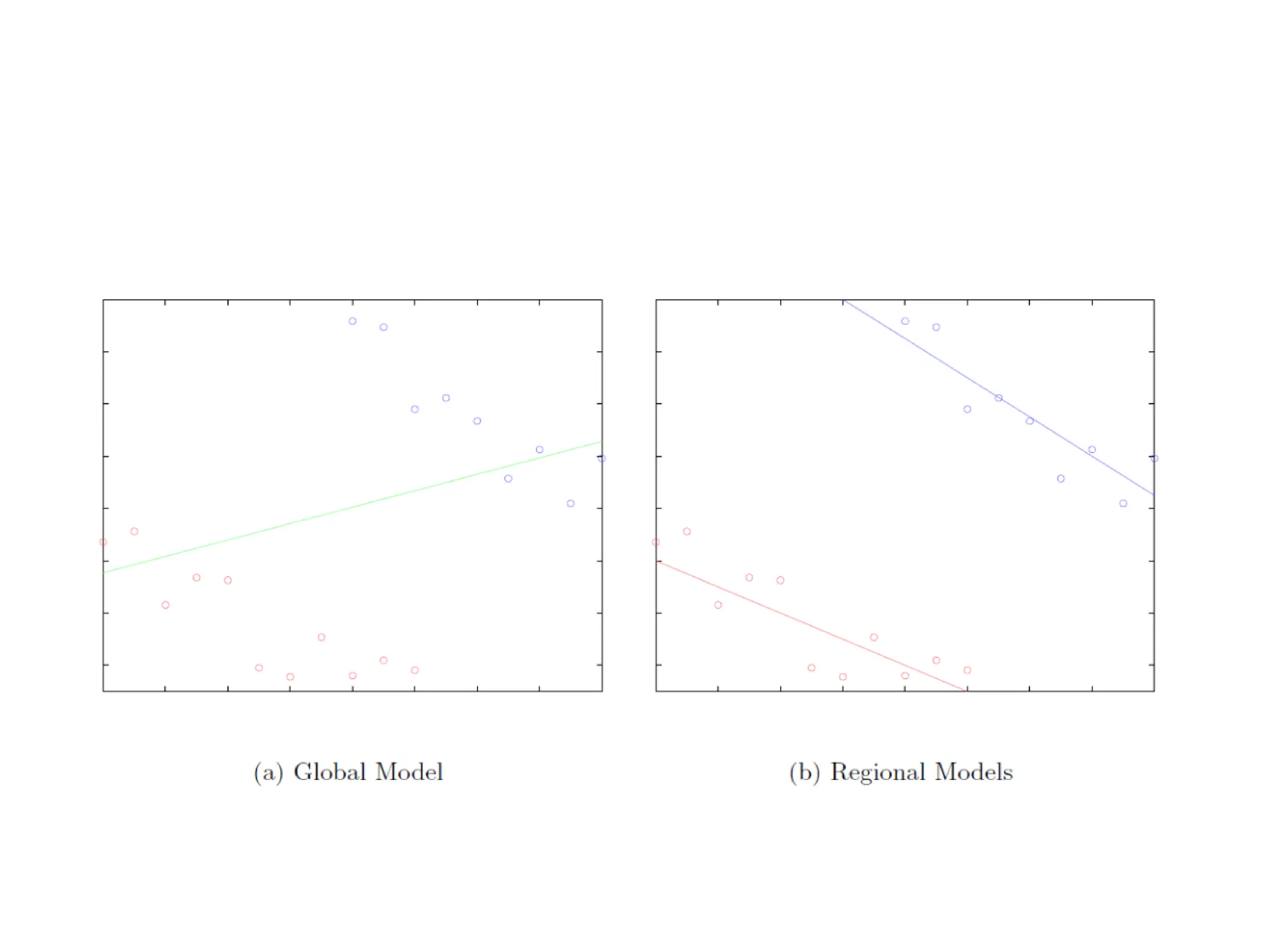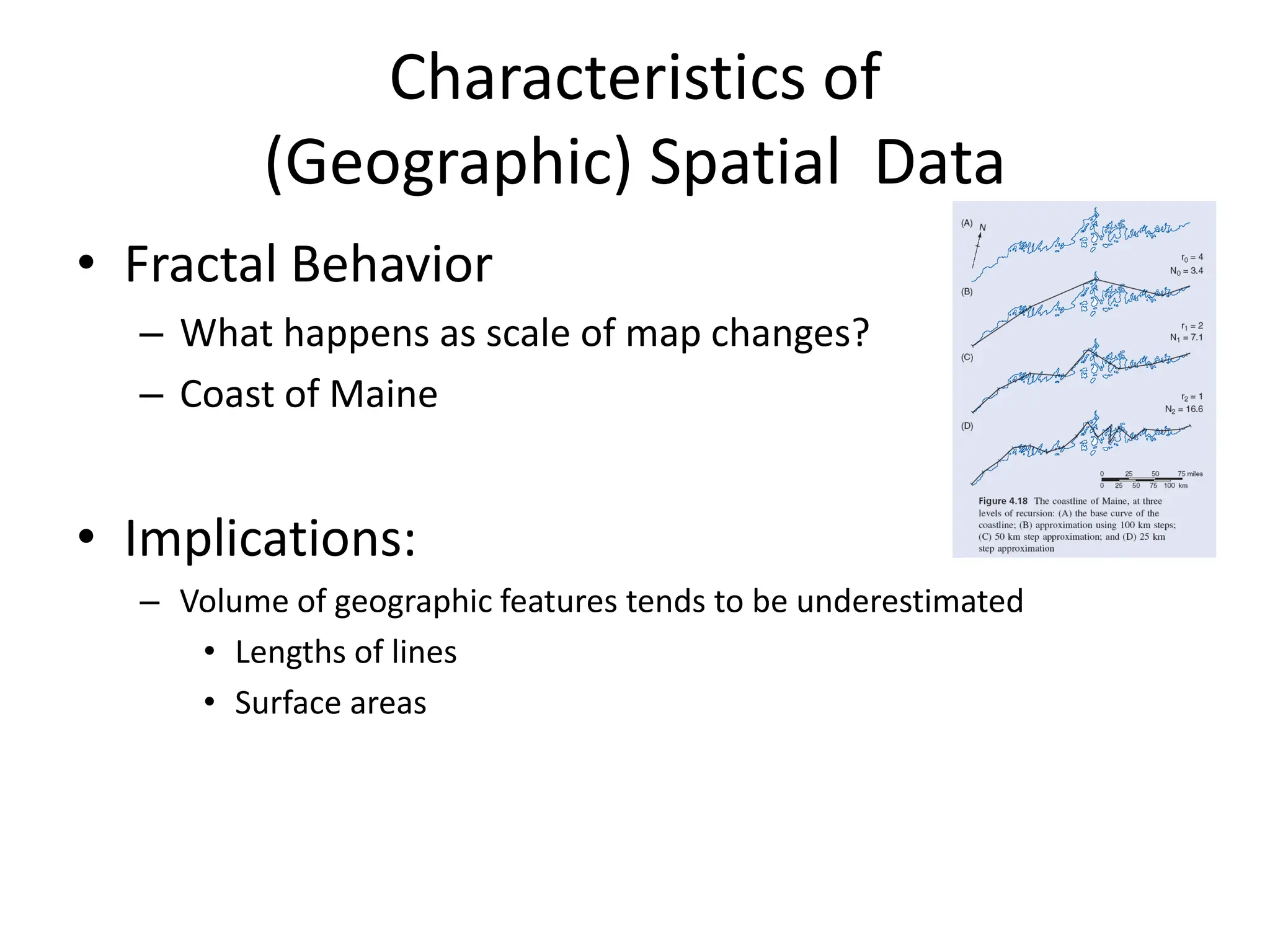This document provides information about a course on spatial analysis and modeling. It describes the core topics that will be covered in the class, including spatial data representation, manipulation techniques like overlay analysis, point pattern analysis, spatial interpolation, spatial statistics, and spatial modeling. It lists the learning objectives, course format of lectures and labs, assignments including lab exercises and a final project, required textbook, and an introduction to key concepts in spatial analysis like spatial data characteristics and Tobler's First Law of geography.
